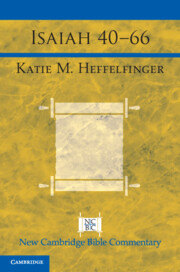Refine search
Actions for selected content:
73 results
Chapter 10 - Imaginary Construction and Experiment
- from Part III - Kierkegaard and the Concept of Thought Experiment
-
- Book:
- Kierkegaard and the Structure of Imagination
- Published online:
- 26 September 2025
- Print publication:
- 16 October 2025, pp 157-175
-
- Chapter
- Export citation
Chapter 4 - Empiricism and Kantian Accounts of Thought Experiment
- from Part I - The Origins of “Thought Experiment” in Kant and Ørsted
-
- Book:
- Kierkegaard and the Structure of Imagination
- Published online:
- 26 September 2025
- Print publication:
- 16 October 2025, pp 63-75
-
- Chapter
- Export citation
Navigating paradox through strategic agility: A case study from the mobility sector
-
- Journal:
- Journal of Management & Organization , First View
- Published online by Cambridge University Press:
- 03 September 2025, pp. 1-22
-
- Article
-
- You have access
- Open access
- HTML
- Export citation
Introduction
-
- Book:
- An International Anomaly
- Published online:
- 23 March 2025
- Print publication:
- 03 April 2025, pp 1-24
-
- Chapter
-
- You have access
- Open access
- HTML
- Export citation
A Paradox of Japanese Taxation: Analyzing the Furusato Nozei Tax System
-
- Journal:
- Asia-Pacific Journal / Volume 15 / Issue 11 / June 2017
- Published online by Cambridge University Press:
- 14 March 2025, e1
-
- Article
-
- You have access
- Open access
- Export citation
Chapter 1 - Defining the Concepts
- from Part 1 - Paradoxes and What They Do to Us
-
- Book:
- The Meaning of Paradoxes and Paradoxical Thinking
- Published online:
- 04 April 2025
- Print publication:
- 13 March 2025, pp 15-18
-
- Chapter
- Export citation
Rigidity and factivity
-
- Journal:
- Episteme , First View
- Published online by Cambridge University Press:
- 27 January 2025, pp. 1-6
-
- Article
-
- You have access
- Open access
- HTML
- Export citation
11 - Toward Sustainability and Responsible Organizations
- from Part IV - Purpose, Sustainability, and Integrity
-
- Book:
- International Management Behavior
- Published online:
- 15 March 2025
- Print publication:
- 16 January 2025, pp 417-444
-
- Chapter
- Export citation
2 - Pathways to Mindful Global Leadership
- from Part I - The New Global Context
-
- Book:
- International Management Behavior
- Published online:
- 15 March 2025
- Print publication:
- 16 January 2025, pp 32-57
-
- Chapter
- Export citation
The Knowledge Content of Statistical Data
-
- Journal:
- Psychometrika / Volume 62 / Issue 1 / March 1997
- Published online by Cambridge University Press:
- 01 January 2025, pp. 133-161
-
- Article
- Export citation
The paradox of hikikomori through a transcultural lens
-
- Journal:
- BJPsych International / Volume 22 / Issue 1 / February 2025
- Published online by Cambridge University Press:
- 11 December 2024, pp. 22-24
- Print publication:
- February 2025
-
- Article
-
- You have access
- Open access
- HTML
- Export citation
Divine Contradiction: replies to critics
-
- Journal:
- Religious Studies / Volume 60 / Issue 4 / December 2024
- Published online by Cambridge University Press:
- 02 September 2024, pp. 717-735
- Print publication:
- December 2024
-
- Article
-
- You have access
- Open access
- HTML
- Export citation
Divine Contradiction: some snippets
-
- Journal:
- Religious Studies / Volume 60 / Issue 4 / December 2024
- Published online by Cambridge University Press:
- 02 September 2024, pp. 680-683
- Print publication:
- December 2024
-
- Article
-
- You have access
- Open access
- HTML
- Export citation
9 - Adynata, Ethnography and Paradox
-
- Book:
- Centaurs and Snake-Kings
- Published online:
- 16 August 2024
- Print publication:
- 25 July 2024, pp 260-290
-
- Chapter
- Export citation
47 - The Essay, Ecocriticism, and the Anthropocene
- from Part V - The Essay and the Essayistic Today
-
-
- Book:
- The Cambridge History of the British Essay
- Published online:
- 31 October 2024
- Print publication:
- 04 July 2024, pp 712-727
-
- Chapter
- Export citation
3 - The Fantasies We Live By
-
- Book:
- Conversations with the Turtles
- Published online:
- 26 September 2024
- Print publication:
- 13 June 2024, pp 18-41
-
- Chapter
- Export citation
3 - Sustainable Development and the Paradox of Legal Universalism
- from Part II - Universal, Pluriversal, and in Between
-
- Book:
- Sustainable Development, International Law, and a Turn to African Legal Cosmologies
- Published online:
- 16 May 2024
- Print publication:
- 23 May 2024, pp 107-144
-
- Chapter
- Export citation

Isaiah 40–66
-
- Published online:
- 04 May 2024
- Print publication:
- 09 May 2024
On the virtues of neutrality
-
- Journal:
- Religious Studies / Volume 60 / Issue 4 / December 2024
- Published online by Cambridge University Press:
- 26 March 2024, pp. 684-690
- Print publication:
- December 2024
-
- Article
- Export citation
1 - Rousseau’s Sovereignty and the Concept of Constitutional Identity
- from Part I - Foundations, Theory, and Concepts
-
-
- Book:
- Deciphering the Genome of Constitutionalism
- Published online:
- 14 March 2024
- Print publication:
- 21 March 2024, pp 23-33
-
- Chapter
- Export citation
